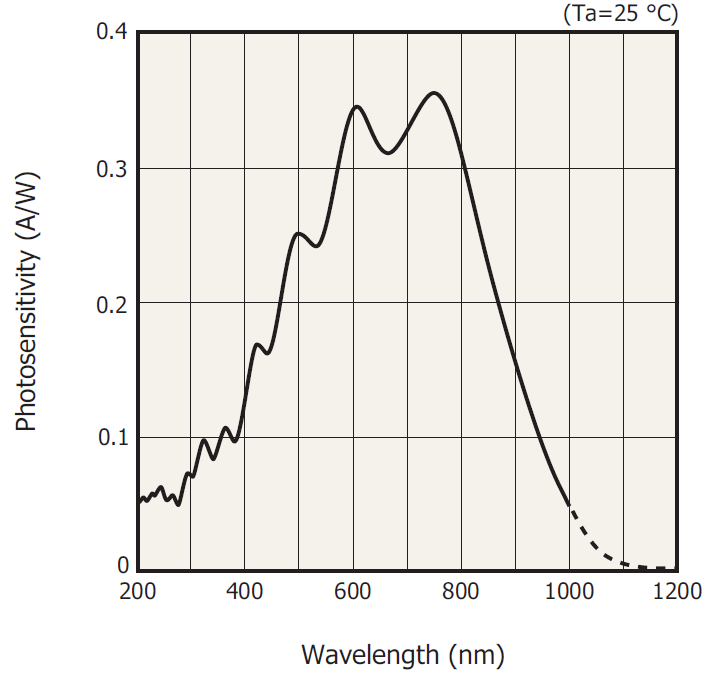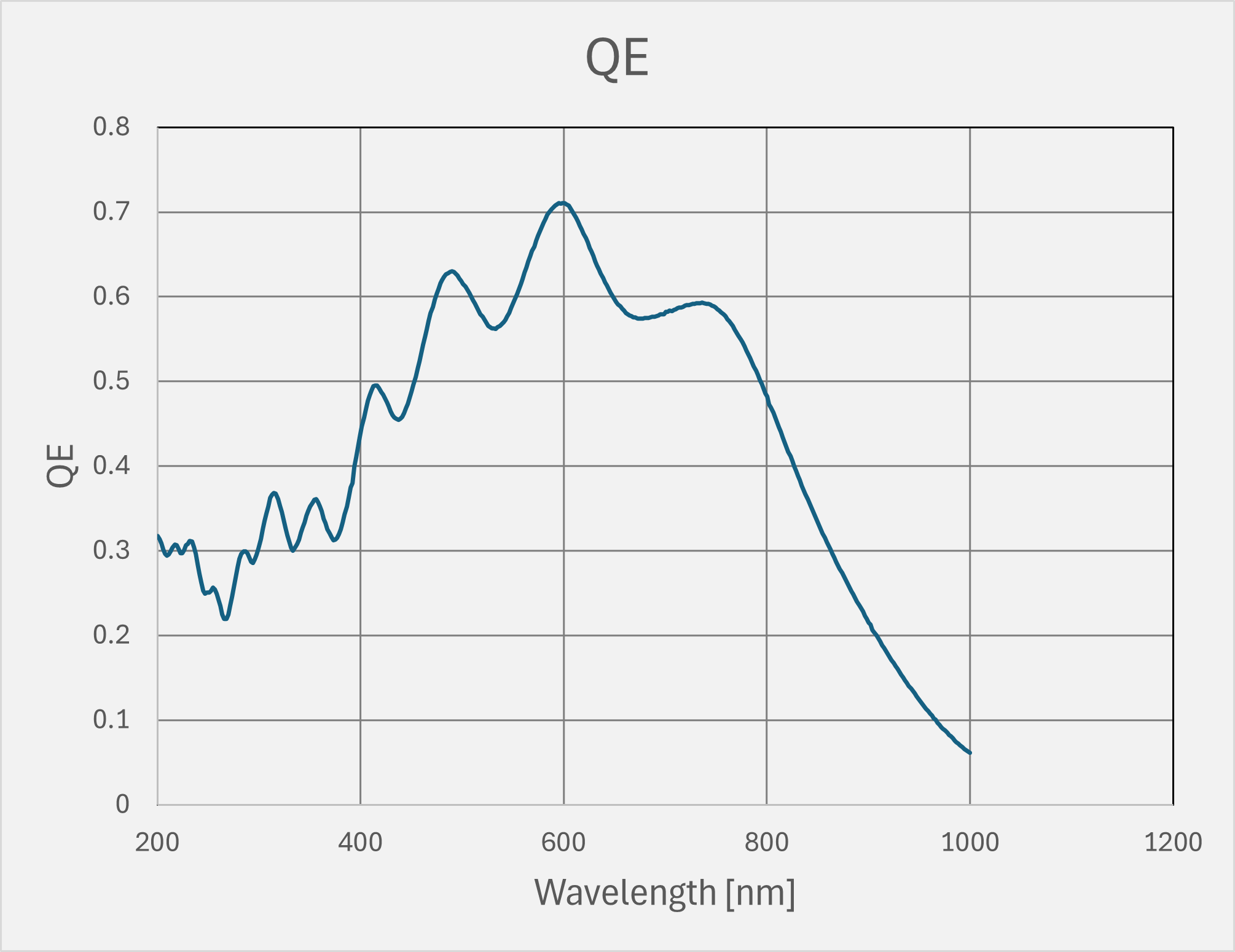This article shows how to calculate quantum efficiency for CMOS sensors.
Most sensor datasheets don't provide the quantum efficiency (QE) directly. Instead, they provide photosensitivity graphs of A/W versus wavelength. In this article we show how to calculate QE from photosensitivity graphs.
Below is an example of a typical CMOS photosensitivity graph:

The photosensitivity is given in [A/W] and can be converted to QE using the following steps:
Photosensitivity consists of:
The electron flux, Fe, can be calculated by dividing the current by the elementary charge e-:
Fe [e-/s] = Current [A] / Qe = Current [A] / 1.60217663 x 10-19 [Coulomb]
The photon flux can be calculated by using Planck's law for the energy of a photon:
Ep [J] = h.F = h.c / L,
where h is Planck's constant (6.62607015 x 10-34 J.Hz-1), c the speed of light (299.792458 x 106 m.s-1) and L the wavelength in [m]. The photon flux, Fp, is the number of photons required to provide 1 W of power:
Fp [p/s] = 1 W / Ep
The QE is given by the number of electrons per photon:
QE = Fe / Fp
The above graph was digitized and postprocessed as described. This is the equivalent QE vs. wavelength:

Observations about CMOS sensors: